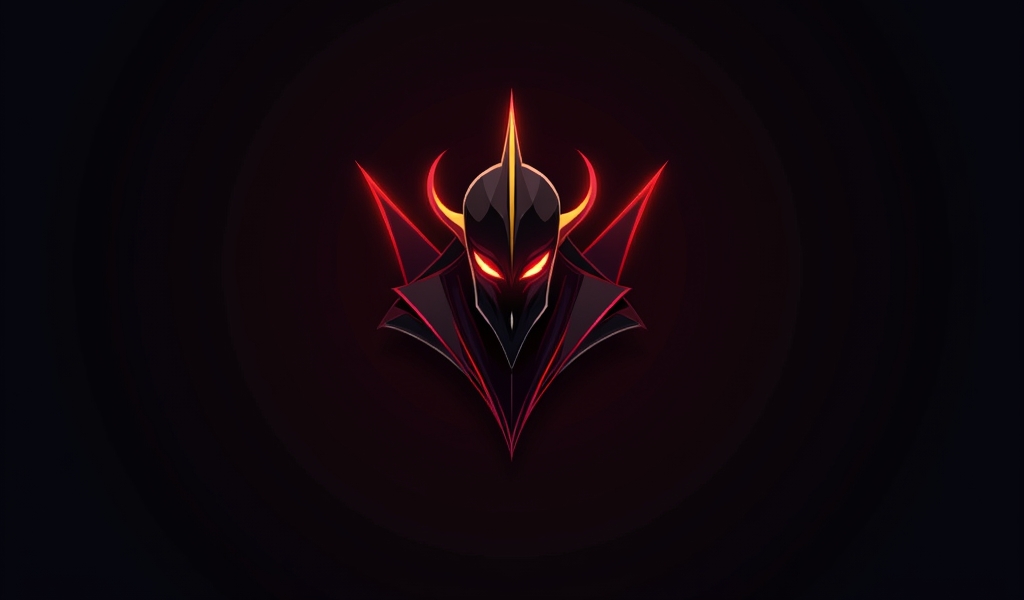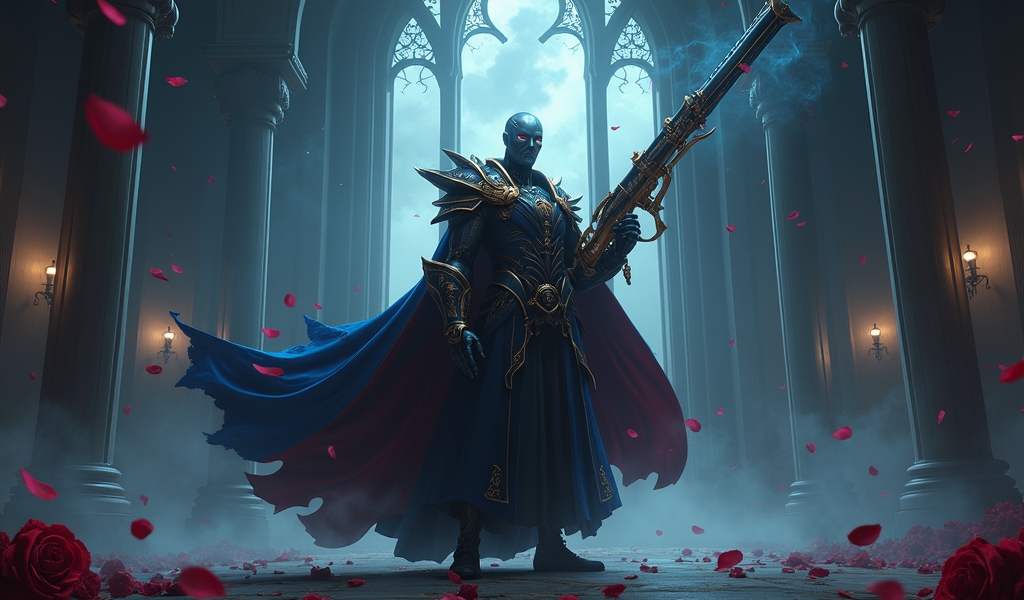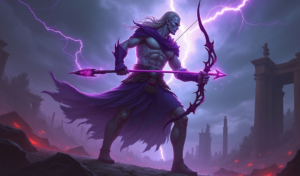Overview
How to play Jhin requires mastering his unique four-shot rhythm, strategic trap placement, and perfectly timed ultimate usage to transform ordinary attacks into deadly art. The Virtuoso breaks conventional ADC rules by focusing on precise timing and positioning rather than attack speed, rewarding players who approach each game as a methodical performance where critical shots and ability combos create beautiful carnage.
Table of Contents
In the diverse roster of League of Legends champions, few characters possess the artistic flair and mechanical uniqueness of Jhin, the Virtuoso. As an AD carry with a fixed attack speed, Jhin breaks conventional ADC rules, turning precise timing and positioning into deadly art. His theatrical personality isn’t just for show—it reflects in his high-skill ceiling gameplay that can leave enemies mesmerized… right before they fall.
Whether you’re looking to add Jhin to your champion pool or aiming to refine your mastery of this methodical marksman, these five professional tips will transform your performance. Let’s explore how to play Jhin and make every shot count, turning your games into the beautiful performances that Jhin himself would applaud.
Tip #1: Master the Four-Shot Rhythm
Jhin’s passive, “Whisper,” defines his unique playstyle. Unlike other complex ADCs who focus on attack speed, Jhin operates on a four-shot cycle where the fourth shot is guaranteed to critically strike and deals bonus execute damage based on the target’s missing health.
The key to lane dominance lies in understanding this rhythm. Use your first three shots for farming and light trading, then look for opportunities to land that devastating fourth shot on enemy champions. In Platinum+ games, successful Jhin players often step forward aggressively when their fourth shot is ready, forcing opponents to respect the potential damage or suffer significant health loss.
Remember that your reload time after the fourth shot creates a window of vulnerability. High-elo Jhin players mitigate this by:
- Using the movement speed from a fourth-shot crit to reposition safely
- Casting abilities during the reload animation to maintain threat
- Holding the fourth shot to zone enemies away from CS
- Using the fourth shot to secure cannon minions when harassing isn’t viable
Pro tip: In extended trades, time your fourth shot to coincide with your support’s crowd control for nearly guaranteed damage that often forces summoner spells or secures kills.
Tip #2: Utilize Deadly Flourish for Maximum Impact
Deadly Flourish (W) is Jhin’s longest-range basic ability and provides utility that can turn skirmishes in your favor. This skillshot roots marked targets, with the mark being applied when enemies are damaged by Jhin or his allies.
Landing W consistently requires anticipating enemy movement patterns. Top Jhin players use these techniques:
- Cast W through minion waves to surprise opponents who think they’re safely positioned
- Use it to follow up on team crowd control for chain CC that can last several seconds
- Hold W until after the enemy uses mobility spells or when they’re in predictable positions (like moving to last-hit a minion)
- Coordinate with junglers to root enemies just as ganks arrive
Vision control drastically improves W effectiveness. Place wards in river and tribush to spot enemies attempting to escape, then root them to secure kills that would otherwise slip away. In higher elos, Jhin players often invest in Control Wards specifically to enable their W to catch out targets in jungle corridors.

Tip #3: Strategic Trap Placement
Lotus Traps (E) offer more than just damage—they provide crucial vision and zoning potential that differentiates great Jhin players from good ones.
The most effective trap placements include:
- Tribush and river entrances to detect jungle ganks
- Behind your minion wave in lane to punish aggressive positioning
- In brush near objectives to reveal enemies attempting stealth approaches
- In jungle chokepoints during rotations to track enemy movements
During sieges, place traps in the paths that enemies would take to defend towers. When defenders step on them, they’re marked for Deadly Flourish, creating pick opportunities that can lead to free objectives.
One advanced technique used by professional Jhin players is the “trap cascade.” By placing several traps in a line along common escape routes, you can create a chain reaction when teamfights break out, slowing multiple enemies and creating chaos in their backline.
While Jhin’s traps offer excellent utility, other ADCs like Caitlyn use similar zone control but with different strategic approaches.
Tip #4: Ultimate Positioning and Timing
Curtain Call, Jhin’s ultimate, transforms him into a long-range execution specialist. Finding the perfect angle for this ability often determines teamfight outcomes.
Optimal ultimate usage includes:
- Positioning perpendicular to escape routes rather than directly behind fleeing enemies
- Starting Curtain Call from fog of war to prevent enemies from immediately identifying your location
- Using ultimate to zone enemies away from objectives even if you don’t fire all shots
- Saving at least one shot to secure kills rather than using all four shots immediately
The biggest mistake lower-elo Jhin players make is using his ultimate too early in teamfights. Instead, wait until enemies have used mobility spells and are at 50% health or lower—this dramatically increases your execution potential.
For objective control, position your ultimate to cover multiple approach paths to Baron or Dragon. Even if you don’t secure kills, the zoning potential can give your team the time needed to complete the objective safely.
Unlike Ezreal’s global ultimate, Jhin’s requires careful positioning but offers greater control and execution potential when used correctly.

Tip #5: Optimal Build Paths and Rune Setups
Jhin’s build path has evolved significantly through recent patches, with critical strike and lethality builds both seeing success in different situations.
The standard crit build path includes:
- Galeforce (essential for mobility and execute potential)
- Rapid Firecannon (extends fourth shot range for safer execution)
- Infinity Edge (amplifies crit damage significantly)
- Lord Dominik’s Regards (against tank-heavy teams)
- Bloodthirster (for sustain against burst damage)
Against squishier team compositions, consider:
- Eclipse (for lethality and % health damage)
- Collector (synergizes with Jhin’s execute potential)
- Rapid Firecannon (maintained for the range advantage)
For runes, Fleet Footwork provides sustain and synergizes with Jhin’s movement speed boosts, while Dark Harvest can be devastating for snowballing games where you’re ahead. Secondary runes should include Nimbus Cloak and Gathering Storm for late-game scaling.
Adapt your build based on the enemy team composition—prioritize Galeforce against mobile assassins and consider defensive options like Guardian Angel earlier if you’re being targeted heavily.
Unlike Draven’s aggressive builds, Jhin’s itemization focuses more on burst potential and utility rather than sustained damage.
Conclusion
Mastering how to play Jhin requires embracing his methodical, artistic approach to combat. By perfecting your four-shot rhythm, landing crucial roots with Deadly Flourish, setting up strategic trap networks, positioning your ultimate for maximum impact, and optimizing your build path, you’ll transform from a simple marksman into a true Virtuoso.
Each game with Jhin should be approached as a performance where timing, positioning, and precision culminate in a deadly showcase of skill. Practice these techniques consistently, and you’ll find yourself climbing the ranks while delivering the beautiful carnage that Jhin himself would consider a masterpiece.
Unlike top laners like Aatrox, Jhin thrives on careful planning rather than direct confrontation. Your success with the Virtuoso comes from thoughtful execution and perfect timing.
Ready to perfect your Jhin gameplay? Share your experiences and personal Jhin tips in the comments below, or check out Mobalytics’ in-depth Jhin guide for additional insights from high-elo players who have mastered this champion.
Frequently Asked Questions
What is the best build for Jhin?
The most effective Jhin build currently centers around Galeforce for its mobility and execute potential, followed by Rapid Firecannon for extended range, and Infinity Edge to maximize critical strike damage. Against tankier teams, incorporate Lord Dominik’s Regards as your third or fourth item. Fleet Footwork remains the most consistent keystone, though Dark Harvest can be powerful when snowballing. Adapt your build based on the enemy composition, prioritizing defensive items like Guardian Angel earlier if you’re being focused.
How do I play Jhin in team fights?
In teamfights, position at maximum auto-attack range behind your frontline, using your first three shots on the closest high-priority target. Save your fourth shot to execute low-health enemies or to crit on priority targets. Use Deadly Flourish (W) to follow up on ally CC or to root enemies trying to dive your backline. Place Lotus Traps (E) in chokepoints during the fight and use Curtain Call strategically after the initial engage when enemies are at half health or when they’re attempting to escape. Remember that your role isn’t to deal sustained damage like other ADCs but to create impactful moments with well-timed abilities and fourth shots.
Is Jhin good for beginners?
Jhin has a moderate learning curve that makes him challenging but rewarding for beginners. His fixed attack speed means you don’t need to master complex kiting mechanics immediately, and his abilities have clear purposes that teach fundamental ADC concepts like positioning and target selection. However, mastering his four-shot rhythm, reload timing, and skillshots requires practice. Beginners may struggle initially with his lack of mobility and reliance on positioning, but these limitations actually teach valuable fundamentals that transfer to other champions. If you’re new to ADC, Jhin can be a good champion to learn the role’s core concepts while having a distinct playstyle.
What are Jhin’s biggest counters?
Jhin struggles most against champions who can bypass his range advantage and get on top of him, as he lacks reliable self-peel beyond his W root (which requires setup) and movement speed from crits. Specifically, mobile assassins like Zed and Talon who can dive the backline pose serious threats. In the bot lane, statistics show that aggressive engage supports paired with all-in ADCs like Draven and Samira counter Jhin effectively. Additionally, tanks who can survive his burst and close the gap (like Malphite) create problems for him. To counter these matchups, perfect your trap placement for zone control and coordinate closely with your support for peel.
How do I use Jhin’s ultimate effectively?
To maximize Jhin’s Curtain Call, position yourself from unexpected angles—ideally perpendicular to enemy escape paths rather than directly behind them. Start your ultimate from fog of war when possible to prevent enemies from immediately identifying your location. When firing, don’t rush all four shots; pace them to account for enemy movement and save at least one shot for securing kills.
Against mobile champions, try to bait out movement abilities before ulting. Remember that the ultimate is also an excellent zoning tool for objectives—even if you don’t land all shots, forcing enemies to move in specific directions can be just as valuable for your team’s positioning. In teamfights, wait until enemies are at about 50% health before using it for maximum execution potential.




